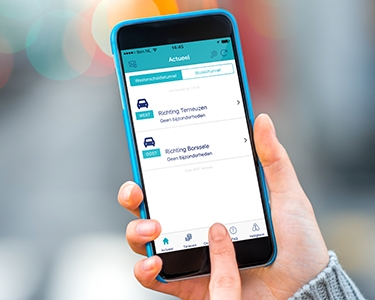Lightning
Tunnels can be roughly divided into two groups: daylight and night tunnels. The lighting in daylight tunnels is as similar as possible to the lighting outside of the tunnel. A night tunnel is darker and takes as a basis the minimum quantity of light that is needed for safe driving conditions. The Netherlands mainly has short tunnels. Furthermore, in a short tunnel, the human eye does not have enough time to adapt to a lower level of lighting. For this reason, short tunnels are brightly lit. The Westerscheldetunnel is 6.6 kilometres long and it is an extremely long road tunnel. Therefore, the night-tunnel concept was used here.
Eye adjustment
Human eyes need time to adapt to changes in lighting. This can be longer for some people than for others. When driving into the Westerscheldetunnel, the lighting level reduces over the first 350 metres. The carriageway is then constantly lit by means of so-called ‘point source lights’ which have light fittings on the ceiling of the tunnel. The lighting level is also adjusted in the outbound part of the tunnel. In order to avoid motorists becoming dazzled when leaving the tunnel, anti-dazzle screens have been fitted at the end of the Westerscheldetunnel, at Terneuzen.
Distraction from flicker
Light sources are fitted to the ceiling of the Westerscheldetunnel. This is known as ‘point source lighting’. Since the lighting is fitted above the road surface, motorists can experience a ‘flickering’ effect. To reduce distraction from flicker at 100 km/h (this is also known as the strobe effect), the lights must be spaced at intervals ranging from 1.8 metres to 11 metres. The light sources in the Westerscheldetunnel are spaced at intervals of 16 metres.
Other lighting
In addition to the ‘conventional’ carriageway lighting, other forms of lighting are also used in the tunnel. Examples of this are the lighting of emergency doors, lighting at emergency stations and naturally the light from other traffic. The safety regulations for the tunnel state that emergency facilities inside the tunnel must be lit. Since it is relatively dark inside the tunnel, other points of light rapidly become annoying distractions. This has been taken into consideration as much as possible in the Westerscheldetunnel. Both the emergency doors and the emergency stations are lit with LED strips which provide diffused light instead of bright lighting from a single point of light.

